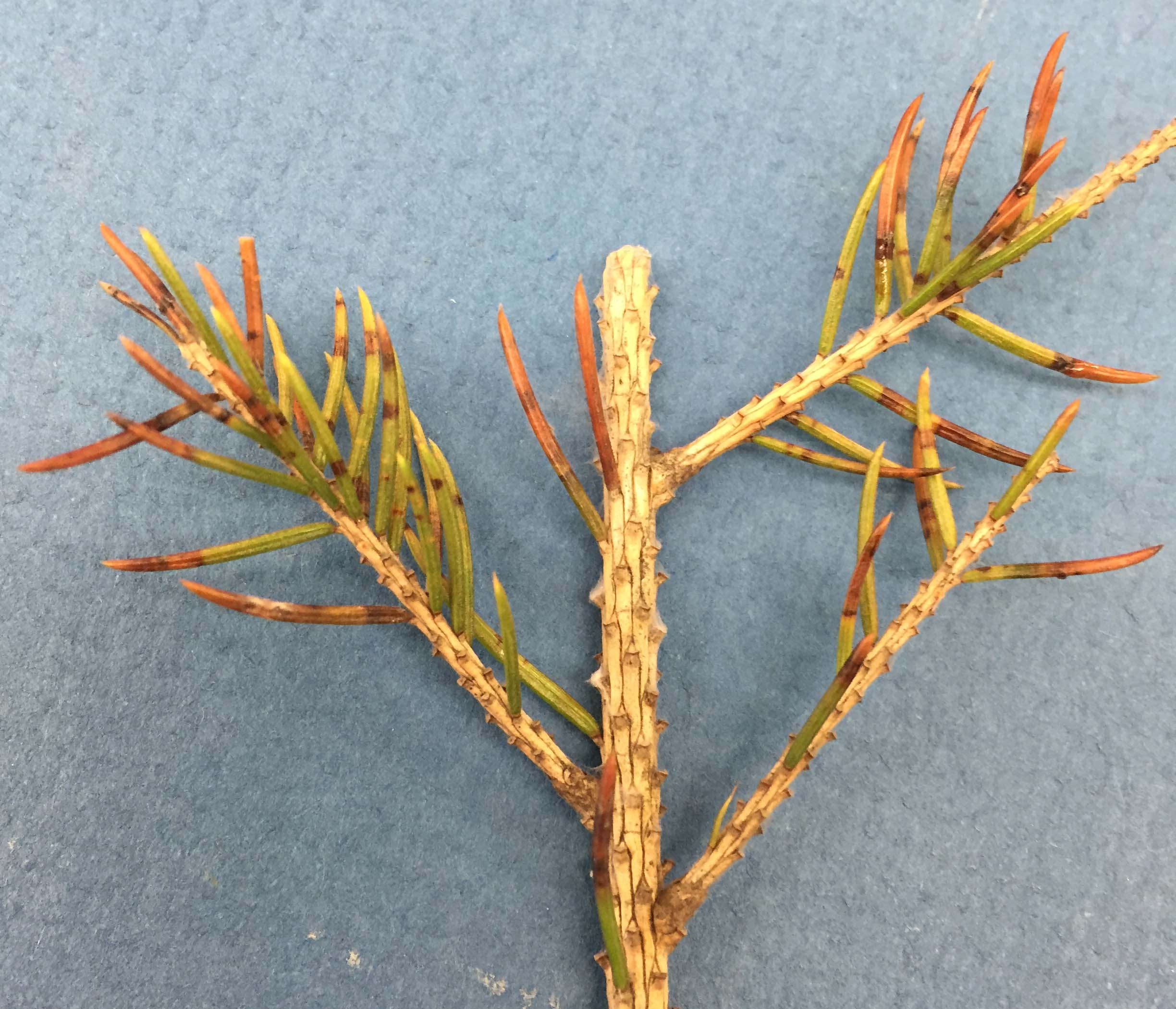
In 1997, the National Capitol Christmas tree was a 63 foot Black Hills spruce from the Black Hills National Forest in South Dakota.Ĭommon diseases include Lirula needle blight. Today the wood is used for dimensional lumber, pulpwood, and is a popular Christmas tree species. They collected the spruce wood for tipi poles. The Plains Native Americans used the inner bark and shoots for food and the hardened sap for gum. The bark is eaten by porcupines and the foliage is lightly browsed by deer.īlack Hills spruce is used in conservation plantings and agroforestry windbreaks. The seeds provide food for songbirds, upland ground birds, and small mammals. It makes a good yard or ornamental tree and is good winter cover. Its USDA growth hardiness zone rating is 2. It is flood intolerant and sensitive to soil compaction.

It grows best in acidic, moist loams, but adapts to many soils including gravelly or sandy loams to fine clay soils.
Lirula needle blight full#
The tree is fairly drought resistant and prefers full sun exposure. It was first seen by French explorers in 1743.īlack Hills spruce ranges from 30 to 60 feet in height and 15 to 25 feet in width. Its needles are denser and are darker in color, varying from bright green to bluish green. It is more compact and slower growing than its eastern cousin, white spruce, and can live 150+ years. Some of the many true fir needle and shoot blights also cause damage to Sitka spruce, and white spruce foliage.Black Hills spruce is a naturally occurring variety of white spruce native to South Dakota. There are three species of true fir, Abies spp., in the Pacific region: amabilis fir, occurs west of the Coast Mountains alpine fir, occurs generally above 1200 m along the Coast and is scattered throughout the Interior into the Yukon Territory, and grand fir, occurs at lower elevations on Vancouver Island and the adjacent mainland coast, inland to the Hope area, and in the southern region of the southwest Kootenays. Canadian Forest Service Publicationsįir needle cast ( Lirula abietis-concoloris) Information on host(s) No asexual spores are produced by this fungus. The sexual spores are wind-borne and can infect only the new needles, thus completing a 2-year life cycle. The following spring, the infected needles turn pale and tawny the fruiting bodies become very dark, large and conspicuous, and split open when mature. Immature fruiting bodies appear as thin, dark brown lines on the underside of these reddened needles in late summer. Wind disseminated sexual spores infect needles on the newest growth from June until August, and by the following spring, the needles turn red and die. Discoloured infected needles are often intermingled with a few healthy green needles, unlike frost or drought discolouration, when whole branches or portions of the crown are uniformly discoloured.Įach blight has a different life history and many are incompletely known that of Isthmiella quadrispora is presented as an example. This discolouration is frequently restricted to particular annual increment of foliage. The most conspicuous symptoms of needle blights are red, yellow or brown discoloured needles, which may later turn grey. the "sexual" fruiting body, which is generally large, occurs along the mid-ribs of the lower needle surface e.g., Lirula punctata.the "asexual", which occurs like small dots on the upper surface of the needles, e.g., Lirula punctata.Generally two types of fruiting bodies develop during the life cycle of blight fungi: Lower branches and understory trees are frequently the most seriously blighted as the more humid conditions favor infections.Įconomic damage caused by the needle blights is conjectural. Blights are more common following wet springs. Lirula abietis-concoloris causes damages on 1-year old infected needles.Ĭlimatic conditions influence spore dissemination and germination, and thus the frequency and severity of infection. The degree of damage can be influenced by the age of the host tree older trees are more resistant to damage and infection of older needles is eventually harmless. Heavily infected trees have an unsightly appearance caused by needle discolouration.

Seedlings may be severely damaged if a high percentage of the foliage is infected. Only a few of the many blight diseases in British Columbia are known to cause serious damage which is limited to increment loss tree mortality is not known. Severe infection can result in significant growth reduction. Needle and shoot blights are caused by a related group of fungi (Ascomycetes), which cause more damage to coniferous foliage in North America than any other group of fungi. This blight is widely distributed throughout the range of its hosts in the interior and coastal regions of British Columbia.


 0 kommentar(er)
0 kommentar(er)
